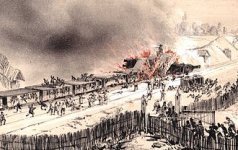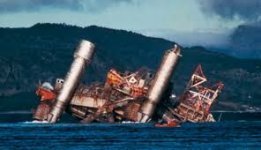The strength of a material is its ability to withstand an applied load without failure or plastic deformation. The strength of a material depends on material, but a very important discovery of the XIX century was that strength also depends on the variation of the applied loads.
If the intensity of direction of a load does not change with time (or changes very slowly), then it is classified as “static load”. On the other hand, if the intensity of direction of a load changes with time, it is classified as the “dynamic load”. The maximal values of the static loads that a mechanical component or structure may withstand are frequently referred to as its “static strength”. On the other hand, the maximal values of the dynamic loads that a mechanical component or structure may withstand are frequently referred to as its “dynamic strength”.
The classification of the loads is of the utmost importance because the maximal dynamic loads that a mechanical component or structure may withstand are usually considerably smaller than its static strength. The treacherous nature of the dynamic loads is such that a failure of the loaded structure does not occur immediately after the application of dynamic load, but after the structure is exposed to the dynamic load for some time, and within the time the structure seems to be operating properly. For that reason, the failure of a mechanical structure or a component after exposition to dynamic loads for long time is called “fatigue failure”. The discovery of mechanical fatigue of materials, and the knowledge about it, mankind paid by many human lives in the most notorious engineering disasters of XIX and XX century, such as the “Versailles rail accident” on land, the “De Havilland Comet disasters” in the air, and the “‘Alexander L. Kielland’ oil platform capsizing” on the sea.
|
1842 sketch of the derailment and fire of the train during the Versailles rail accident |
A BOAC de Havilland Comet 1 similar to the two aircrafts destroyed in the accidents |
|
Capsized oil platform “Alexander L. Kielland” |
|



